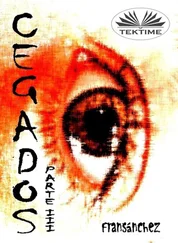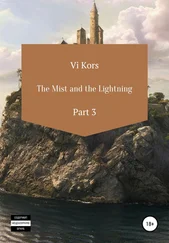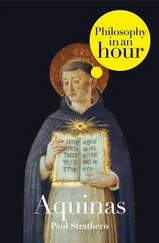Reply Obj. 3: Although the name "God" is common to the three Persons, yet sometimes it stands for the Person of the Father alone, sometimes only for the Person of the Son or of the Holy Ghost, as stated above (Q. 16, A. 1; First Part, Q. 39, A. 4). So that when we say, "The Blessed Virgin is the Mother of God," this word "God" stands only for the incarnate Person of the Son. _______________________
FIFTH ARTICLE [III, Q. 35, Art. 5]
Whether There Are Two Filiations in Christ?
Objection 1: It would seem that there are two filiations in Christ. For nativity is the cause of filiation. But in Christ there are two nativities. Therefore in Christ there are also two filiations.
Obj. 2: Further, filiation, which is said of a man as being the son of someone, his father or his mother, depends, in a way, on him: because the very being of a relation consists in being referred to another; wherefore if one of two relatives be destroyed, the other is destroyed also. But the eternal filiation by which Christ is the Son of God the Father depends not on His Mother, because nothing eternal depends on what is temporal. Therefore Christ is not His Mother's Son by temporal filiation. Either, therefore, He is not her Son at all, which is in contradiction to what has been said above (AA. 3, 4), or He must needs be her Son by some other temporal filiation. Therefore in Christ there are two filiations.
Obj. 3: Further, one of two relatives enters the definition of the other; hence it is clear that of two relatives, one is specified from the other. But one and the same cannot be in diverse species. Therefore it seems impossible that one and the same relation be referred to extremes which are altogether diverse. But Christ is said to be the Son of the Eternal Father and a temporal mother, who are terms altogether diverse. Therefore it seems that Christ cannot, by the same relation, be called the Son of the Father and of His Mother Therefore in Christ there are two filiations.
On the contrary, As Damascene says (De Fide Orth. iii), things pertaining to the nature are multiple in Christ; but not those things that pertain to the Person. But filiation belongs especially to the Person, since it is a personal property, as appears from what was said in the First Part (Q. 32, A. 3; Q. 40, A. 2). Therefore there is but one filiation in Christ.
I answer that, opinions differ on this question. For some, considering only the cause of filiation, which is nativity, put two filiations in Christ, just as there are two nativities. On the contrary, others, considering only the subject of filiation, which is the person or hypostasis, put only one filiation in Christ, just as there is but one hypostasis or person. Because the unity or plurality of a relation is considered in respect, not of its terms, but of its cause or of its subject. For if it were considered in respect of its terms, every man would of necessity have in himself two filiations—one in reference to his father, and another in reference to his mother. But if we consider the question aright, we shall see that every man bears but one relation to both his father and his mother, on account of the unity of the cause thereof. For man is born by one birth of both father and mother: whence he bears but one relation to both. The same is said of one master who teaches many disciples the same doctrine, and of one lord who governs many subjects by the same power. But if there be various causes specifically diverse, it seems that in consequence the relations differ in species: wherefore nothing hinders several such relations being in the same subject. Thus if a man teach grammar to some and logic to others, his teaching is of a different kind in one case and in the other; and therefore one and the same man may have different relations as the master of different disciples, or of the same disciples in regard to diverse doctrines. Sometimes, however, it happens that a man bears a relation to several in respect of various causes, but of the same species: thus a father may have several sons by several acts of generation. Wherefore the paternity cannot differ specifically, since the acts of generation are specifically the same. And because several forms of the same species cannot at the same time be in the same subject, it is impossible for several paternities to be in a man who is the father of several sons by natural generation. But it would not be so were he the father of one son by natural generation and of another by adoption.
Now, it is manifest that Christ was not born by one and the same nativity, of the Father from eternity, and of His Mother in time: indeed, these two nativities differ specifically. Wherefore, as to this, we must say that there are various filiations, one temporal and the other eternal. Since, however, the subject of filiation is neither the nature nor part of the nature, but the person or hypostasis alone; and since in Christ there is no other hypostasis or person than the eternal, there can be no other filiation in Christ but that which is in the eternal hypostasis. Now, every relation which is predicated of God from time does not put something real in the eternal God, but only something according to our way of thinking, as we have said in the First Part (Q. 13, A. 7). Therefore the filiation by which Christ is referred to His Mother cannot be a real relation, but only a relation of reason.
Consequently each opinion is true to a certain extent. For if we consider the adequate causes of filiation, we must needs say that there are two filiations in respect of the twofold nativity. But if we consider the subject of filiation, which can only be the eternal suppositum, then no other than the eternal filiation in Christ is a real relation. Nevertheless, He has the relation of Son in regard to His Mother, because it is implied in the relation of motherhood to Christ. Thus God is called Lord by a relation which is implied in the real relation by which the creature is subject to God. And although lordship is not a real relation in God, yet is He really Lord through the real subjection of the creature to Him. In the same way Christ is really the Son of the Virgin Mother through the real relation of her motherhood to Christ.
Reply Obj. 1: Temporal nativity would cause a real temporal filiation in Christ if there were in Him a subject capable of such filiation. But this cannot be; since the eternal suppositum cannot be receptive of a temporal relation, as stated above. Nor can it be said that it is receptive of temporal filiation by reason of the human nature, just as it is receptive of the temporal nativity; because human nature would need in some way to be the subject of filiation, just as in a way it is the subject of nativity; for since an Ethiopian is said to be white by reason of his teeth, it must be that his teeth are the subject of whiteness. But human nature can nowise be the subject of filiation, because this relation regards directly the person.
Reply Obj. 2: Eternal filiation does not depend on a temporal mother, but together with this eternal filiation we understand a certain temporal relation dependent on the mother, in respect of which relation Christ is called the Son of His Mother.
Reply Obj. 3: One and being are mutually consequent, as is said Metaph. iv. Therefore, just as it happens that in one of the extremes of a relation there is something real, whereas in the other there is not something real, but merely a certain aspect, as the Philosopher observes of knowledge and the thing known; so also it happens that on the part of one extreme there is one relation, whereas on the part of the other there are many. Thus in man on the part of his parents there is a twofold relation, the one of paternity, the other of motherhood, which are specifically diverse, inasmuch as the father is the principle of generation in one way, and the mother in another (whereas if many be the principle of one action and in the same way—for instance, if many together draw a ship along—there would be one and the same relation in all of them); but on the part of the child there is but one filiation in reality, though there be two in aspect, corresponding to the two relations in the parents, as considered by the intellect. And thus in one way there is only one real filiation in Christ, which is in respect of the Eternal Father: yet there is another temporal relation in regard to His temporal mother. _______________________
Читать дальше












